Ttsaang
Veteran Member
I've removed 12 windows that need were leaking and I'm in the process of drying out and repairing the wooden frames. I plan to use West System epoxy to seal and repair the frames before I re-bed the 1/4" glass with Sikaflex. I'm waiting to hear back from someone at Ocean Pacific Marine Supply about using Sikaflex 296 as well as the Sika Aktivator primer for glass to wood applications. As opposed to Sikaflex 291. Any thoughts about this are appreciated. I'm going to seal and fill all the end grain ply window frames with West System and I plan to get the windows back in and eventually paint the entire superstructure cabin with Interlux Brightside. There's 2 windows in the galley that look like they used to open and the previous owner siliconed them shut. I plan to rework the framed for a single piece of glass. It looks like the current windows were installed in 2013 and there's signs of green bondo looking fibreglass repair in different locations. I will need to laminate some new wood in with epoxy in a few sections.
While crawling around removing the windows and scraping off the Sika I noticed a soft spot along the deck near the teak cap rail on the starboard side (I apologize if my terminology is incorrect) The deck is fibreglass with mahogany plywood below. I cut away the fibreglass and removed the rotten ply. Some of the rot went beyond the plywood into what looks like a 2 x 6 piece of wood below the mahogany ply. It has partially exposed some of the stainless fasteners and the rotten ply recesses under the teak cap rail by about a 1/2" in several locations. I'm hoping to use West System high density filler to build up the low area's and then replace the ply and fibreglass. Is the West System High density filler structurally strong enough? Once I have everything reassembled I'm thinking about putting a very small fillet along the edge of the deck where the deck meets the teak cap rail to encourage water away from that joint. I tapped around the whole deck with a hammer and the only other bad spot is on the port side midships. That section of ply cut out nicely and there was not rot beyond the ply. Have a look at the pictures. I'm trying to dry everything out still, the wood is quite saturated. I'm open to any input or advise. I'm fairly handy and this will be my first experience working with epoxy. Thanks
While crawling around removing the windows and scraping off the Sika I noticed a soft spot along the deck near the teak cap rail on the starboard side (I apologize if my terminology is incorrect) The deck is fibreglass with mahogany plywood below. I cut away the fibreglass and removed the rotten ply. Some of the rot went beyond the plywood into what looks like a 2 x 6 piece of wood below the mahogany ply. It has partially exposed some of the stainless fasteners and the rotten ply recesses under the teak cap rail by about a 1/2" in several locations. I'm hoping to use West System high density filler to build up the low area's and then replace the ply and fibreglass. Is the West System High density filler structurally strong enough? Once I have everything reassembled I'm thinking about putting a very small fillet along the edge of the deck where the deck meets the teak cap rail to encourage water away from that joint. I tapped around the whole deck with a hammer and the only other bad spot is on the port side midships. That section of ply cut out nicely and there was not rot beyond the ply. Have a look at the pictures. I'm trying to dry everything out still, the wood is quite saturated. I'm open to any input or advise. I'm fairly handy and this will be my first experience working with epoxy. Thanks
Attachments
-
 60366217589__66D46CA7-3233-4D7F-9A47-524281F612FE.jpg133.6 KB · Views: 98
60366217589__66D46CA7-3233-4D7F-9A47-524281F612FE.jpg133.6 KB · Views: 98 -
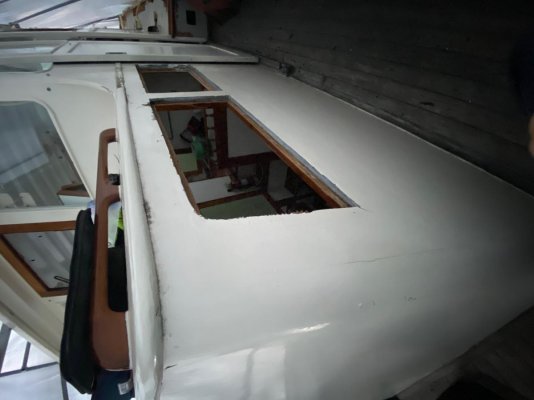 IMG_2888.jpg71.5 KB · Views: 102
IMG_2888.jpg71.5 KB · Views: 102 -
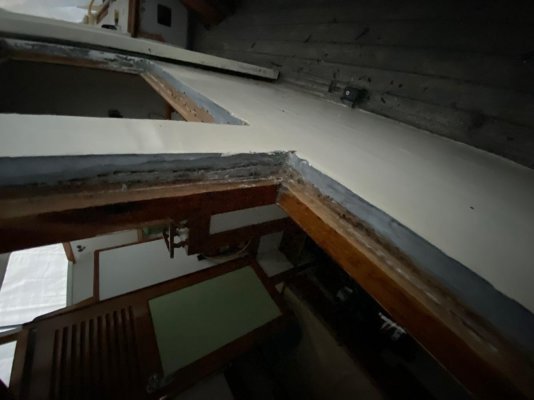 IMG_2889.jpg67.1 KB · Views: 98
IMG_2889.jpg67.1 KB · Views: 98 -
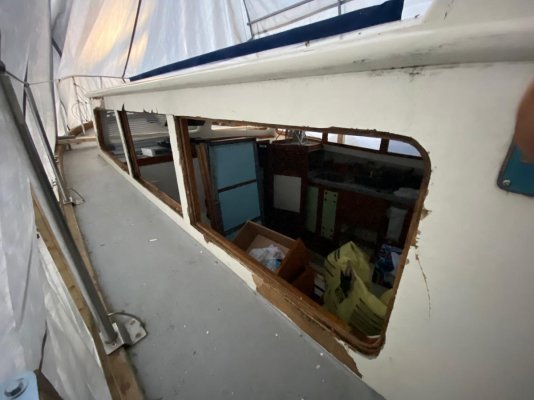 IMG_2890.jpg87.7 KB · Views: 93
IMG_2890.jpg87.7 KB · Views: 93 -
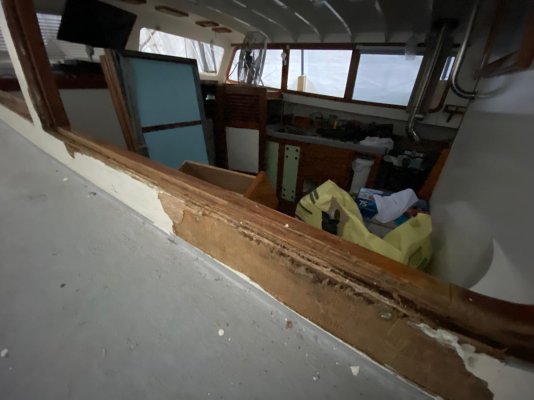 IMG_2891.jpg82.6 KB · Views: 96
IMG_2891.jpg82.6 KB · Views: 96 -
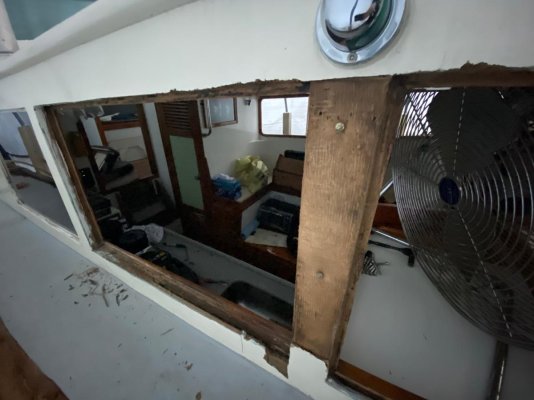 IMG_2892.jpg93.2 KB · Views: 92
IMG_2892.jpg93.2 KB · Views: 92 -
 IMG_2894.jpg72.6 KB · Views: 92
IMG_2894.jpg72.6 KB · Views: 92 -
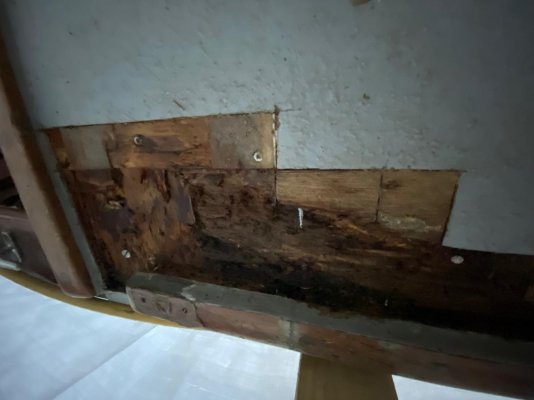 IMG_2895.jpg71.1 KB · Views: 88
IMG_2895.jpg71.1 KB · Views: 88 -
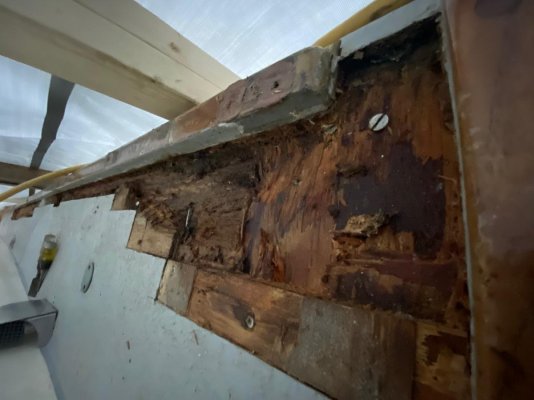 IMG_2896.jpg90.1 KB · Views: 91
IMG_2896.jpg90.1 KB · Views: 91 -
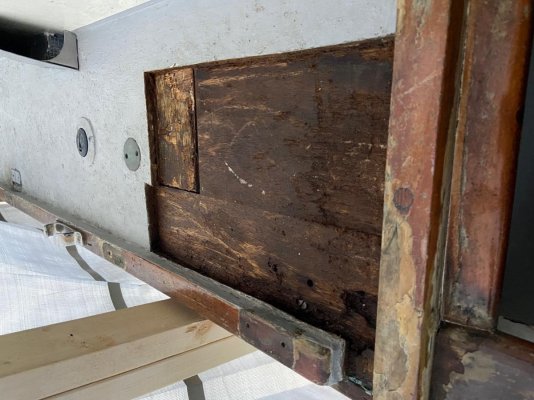 IMG_2898.jpg149.4 KB · Views: 95
IMG_2898.jpg149.4 KB · Views: 95
Last edited:
